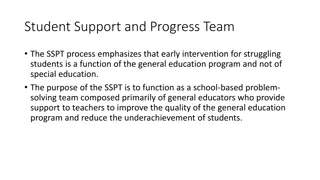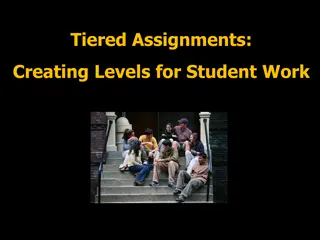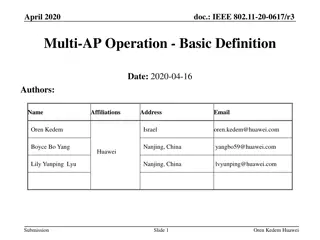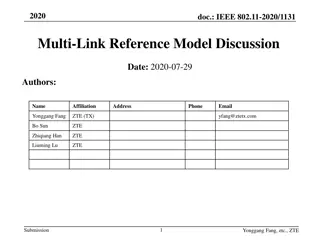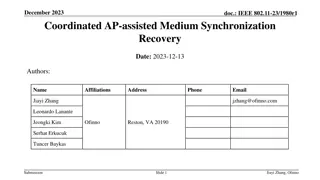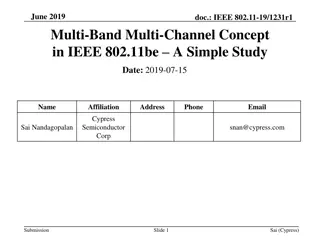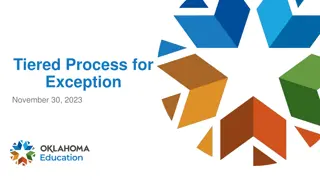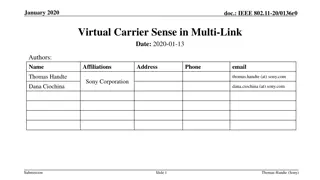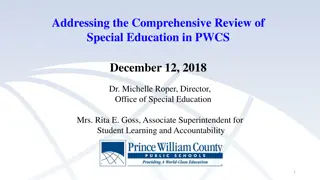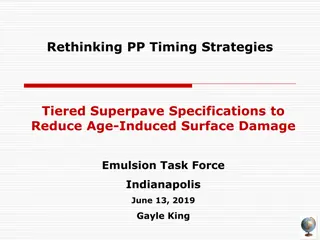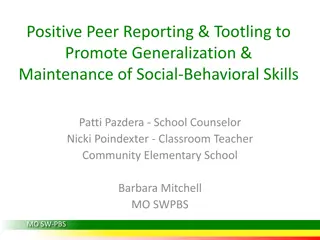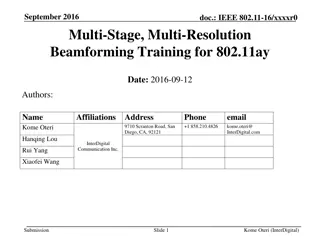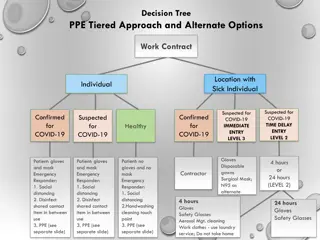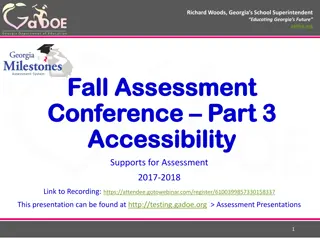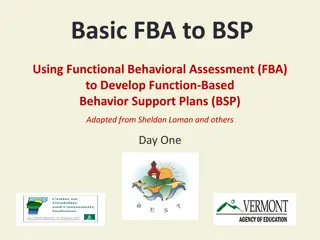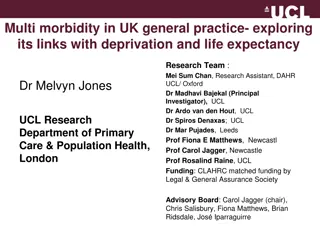Multi-Tiered System of Support in Education
Utilizing a multi-tiered model for targeted academic and behavioral interventions, emphasizing preventive strategies, individualized assessments, and research-based instructional practices. Key elements include tiered interventions, ongoing professional development, and systematic student assessment protocols. This comprehensive approach aims to address student-specific needs effectively within the general education setting, promoting high-quality instruction for all learners.
Uploaded on Feb 25, 2025 | 0 Views
Download Presentation

Please find below an Image/Link to download the presentation.
The content on the website is provided AS IS for your information and personal use only. It may not be sold, licensed, or shared on other websites without obtaining consent from the author.If you encounter any issues during the download, it is possible that the publisher has removed the file from their server.
You are allowed to download the files provided on this website for personal or commercial use, subject to the condition that they are used lawfully. All files are the property of their respective owners.
The content on the website is provided AS IS for your information and personal use only. It may not be sold, licensed, or shared on other websites without obtaining consent from the author.
E N D
Presentation Transcript
RTI: MULTI-TIERED SYSTEM OF SUPPORT (MTSS) Seguin ISD Curriculum and Instruction Department August 2015
Essential Component of RtI: Multi-Tiered System of Support 2 A multi-tiered model is used to ensure that appropriate instruction directly addresses students academic and behavioral difficulties in the general education setting Includes layers of increasingly intense intervention responding to student-specific needs TEA RtI Guidance Document Seguin ISD Curriculum and Instruction Department August 2015
Multi-Tiered System of Support: Public Health & Disease Prevention 3 Tertiary (FEW) - Reduce complications, intensity, severity of current cases Ex. Chemotherapy, surgery Secondary (SOME) - Reduce current cases of problem behavior Ex. Antibiotics Primary (ALL) - Reduce new cases of problem behavior Ex. Vaccines, nutrition Seguin ISD Curriculum and Instruction Department August 2015
Seguin ISD Multi-Tier Model ACADEMIC SYSTEMS BEHAVIORAL SYSTEMS TIER 3: Intensive, Individual Interventions Individual students Assessment-based Intense, durable procedures TIER 3: Intensive, Individual Interventions Individual students Assessment-based Intense, durable procedures 1-5% 1-5% TIER 2: Targeted Group Interventions Some students (at-risk) High efficiency Rapid response TIER 2: Targeted Group Interventions Some students (at-risk) High efficiency Rapid response 10-15% 10-15% TIER 1: Core Instructional Interventions All students Preventive, proactive TIER 1: Core Instructional Interventions All students Preventive, proactive 80-85% 80-85% 4 ALL STUDENTS Seguin ISD Curriculum and Instruction Department August 2015
Key Elements of Tier 1 Instruction Core content-area instruction that focuses on the grade-specific essential components Research-based instructional practices Systematic assessment of ALL students three times per year Ongoing professional development to provide teachers with the necessary tools to ensure every student received high-quality instruction
Remember: Tier 1 MUST be in place in order for Tier 2 and Tier 3 to be effective 6 Seguin ISD Curriculum and Instruction Department August 2015
What are high-quality interventions? 7 Target struggling learners (identified by universal screeners) Includes additional, targeted instruction Involves frequent progress monitoring to ensure that learning gaps are closing Uses assessment data to inform intervention Seguin ISD Curriculum and Instruction Department August 2015
Thoughts What makes an intervention a high-quality/research based intervention? What does it mean to implement an intervention with fidelity? 9 Seguin ISD Curriculum and Instruction Department August 2015
High-Quality Tier II Intervention Targets struggling learners (e.g. identified by assessment given three times per year) Includes additional, targeted instruction in the essential components that have the highest impact on student learning Involves frequent progress monitoring (e.g. every two weeks) Uses assessment data to inform instruction (e.g. grouping, planning/delivering effective lessons, scaffolding instruction) Seguin ISD Curriculum and Instruction Department August 2015
How does Tier II intervention differ from Tier I instruction? Tier II intervention is more explicit, systematic, intensive, and supportive with struggling learners receiving more instructional time (e.g. an additional 30 minutes) than Tier I classroom instruction Tier II is conducted with same-ability small groups inside or outside the classroom setting Tier II instruction involves frequent progress monitoring (e.g. every two weeks) to track student progress and inform instruction Seguin ISD Curriculum and Instruction Department August 2015
Do struggling learners receiving Tier III continue to receive Tier II intervention? No, struggling learners who require Tier III no longer receive Tier II intervention. Tier III Intervention is the next step for students with extreme difficulties who do not make adequate progress in Tier II intervention. These students continue to receive Tier I instruction, plus the more intensive Tier III intervention. Seguin ISD Curriculum and Instruction Department August 2015
RTI Continuum of Support for ALL Intensive Anger Management Targeted Fluency Universal Peer Numbers and Operations Interactions Label skills not people 13 Seguin ISD Curriculum and Instruction Department August 2015
RtI calls for a shift in thinking The central question is not: What about the students is causing the performance discrepancy? But rather: What about the interaction of the curriculum, instruction, learners, and learning environment should be altered so that students learn? -Howell 14 Seguin ISD Curriculum and Instruction Department August 2015

 undefined
undefined







